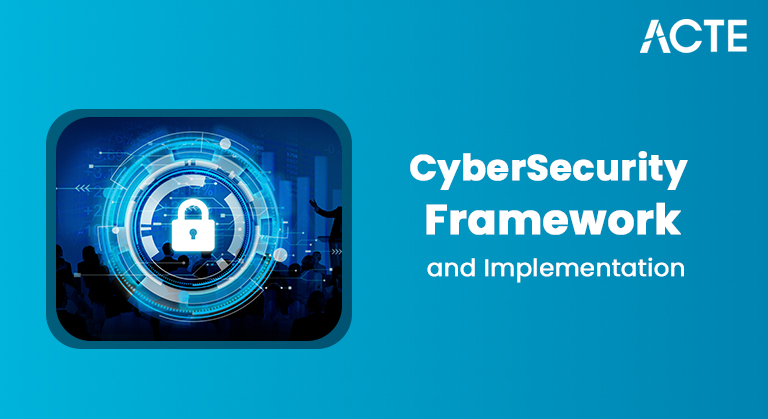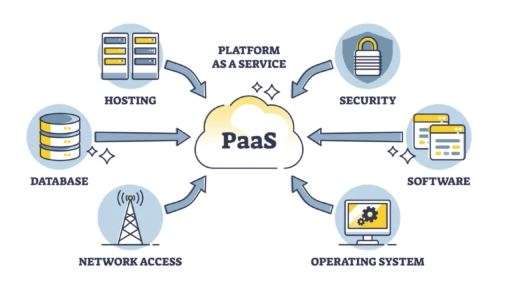
- Introduction
- What is PaaS?
- Key Benefits of PaaS
- PaaS vs. IaaS vs. SaaS
- Leading PaaS Providers (Azure, Google App Engine)
- PaaS for Web Application Development
- Security and Compliance in PaaS
- Use Cases of PaaS
- Challenges of PaaS
- Future of PaaS
- Conclusion
Introduction
Platform as a Service (PaaS) has become a crucial component of modern cloud computing, providing a streamlined way for developers to build, deploy, and manage applications without worrying about infrastructure management. While PaaS offers several advantages, such as scalability, automation, and ease of integration, its impact extends beyond just application development. Businesses across various industries leverage PaaS for web development, big data analytics, IoT solutions, and AI-driven applications. However, like any technology, PaaS comes with its challenges, including security concerns, vendor lock-in, and performance variability, which are important topics discussed in a Cloud Computing Course. Additionally, as cloud technology evolves, PaaS is expected to integrate with cutting-edge trends such as serverless computing, AI-driven automation, and edge computing.
What is PaaS?
Platform as a Service (PaaS) is a cloud computing model that provides a platform allowing customers to develop, run, and manage applications without the complexity of building and maintaining the underlying infrastructure. It is a comprehensive suite that includes operating systems, middleware, databases, development tools, and other resources needed to create applications. PaaS provides developers with an environment where they can focus purely on coding and deploying applications, without worrying about managing servers, networks, storage, or scaling. The primary advantage of PaaS is that it abstracts much of the infrastructure management, making it easier for developers to focus on writing code, developing new features, and enhancing user experience. It also offers scalability, flexibility, and integrated tools to streamline the development process. Common examples of PaaS include Azure App Service, Google App Engine, and Heroku.
Interested in Obtaining Your Cloud Computing Certificate? View The Cloud Computing Online Course Offered By ACTE Right Now!
Key Benefits of PaaS
- Cost-Effective: PaaS eliminates the need for investing in physical hardware and managing underlying infrastructure, reducing capital and operational costs. Users pay only for the resources they consume, which makes it cost-effective for both small startups and large enterprises.
- Speed and Agility: With PaaS, developers can rapidly develop applications, as they do not need to spend time setting up the underlying infrastructure. This leads to faster time-to-market and an increased ability to experiment and iterate on ideas.
- Scalability: PaaS platforms are designed to scale applications up or down based on demand. Whether it is handling a sudden spike in traffic or scaling back during off-peak hours, PaaS automatically adjusts resources to meet the application’s needs.
- Integration and Flexibility: PaaS offers a variety of integrated development tools, databases, analytics, and monitoring services, which can be further enhanced by AWS SWF Scalable Workflow Automation for streamlining complex workflows. These integrated tools help developers to focus on writing code, while the platform handles maintenance tasks like updates and patches.
- Security: PaaS offers a variety of integrated development tools, databases, analytics, and monitoring services. These integrated tools help developers to focus on writing code, while the platform handles maintenance tasks like updates and patches.
- Focus on Application Development: With PaaS, developers can focus on application logic and functionality rather than managing hardware or software updates. The platform abstracts many system administration tasks, providing a ready-to-use environment for development.
- IaaS gives users the most control over infrastructure but requires managing more components.
- PaaS focuses on application development and provides a platform where the infrastructure and some middleware are abstracted.
- SaaS delivers ready-to-use software with no user management responsibilities, other than user access.
- Compliance: Many PaaS providers comply with industry standards and regulations such as GDPR, HIPAA, and PCI DSS, which can be further enhanced by Managing Docker Containers on AWS for secure and compliant containerized applications.
- Data Encryption: Most PaaS platforms provide encryption of data both in transit and at rest, ensuring that sensitive data is protected from unauthorized access.
- Identity and Access Management (IAM): PaaS platforms offer IAM tools that allow organizations to control who can access their applications and resources. This can include role-based access control (RBAC), authentication, and authorization mechanisms.
- Security Audits and Monitoring: PaaS platforms often provide built-in tools for monitoring and logging access to applications, which helps detect suspicious activity. Some platforms offer security audits to ensure that applications adhere to best security practices.
- Backup and Disaster Recovery: PaaS platforms typically offer automated backup services and disaster recovery options to ensure data availability and business continuity in case of failure.
- Web and Mobile Application Development: Developers can use PaaS to build and deploy scalable web and mobile applications quickly.
- Big Data and Analytics: PaaS supports data processing frameworks and tools that help businesses analyze and process large volumes of data.
- Internet of Things (IoT): Many PaaS platforms provide tools for managing IoT applications, handling data collection, storage, and processing.
- AI and Machine Learning: PaaS solutions often integrate AI/ML capabilities, making it easier for developers to build intelligent applications without managing infrastructure.
- Vendor Lock-in: Switching providers can be complex due to dependency on specific tools and services.
- Security Concerns: While PaaS providers implement strong security measures, users must also ensure application-level security, which can be enhanced by Efficient Automation in Jenkins With Docker for secure and automated deployment processes.
- Limited Customization: Some PaaS offerings may limit customization options compared to traditional infrastructure solutions.
- Performance Variability: Multi-tenant environments can sometimes lead to performance fluctuations depending on the provider.
- Serverless Computing: The integration of serverless architecture with PaaS will further reduce infrastructure management.
- AI and Automation: PaaS platforms will increasingly use AI for automated scaling, security monitoring, and predictive maintenance.
- Hybrid and Multi-Cloud Deployments: Organizations will adopt multi-cloud PaaS strategies to avoid vendor lock-in and enhance resilience, a strategy that is thoroughly explored in a Cloud Computing Course.
- Edge Computing Integration: PaaS solutions will integrate with edge computing frameworks to support real-time data processing and IoT applications.

PaaS vs. IaaS vs. SaaS
To understand PaaS in the context of other cloud models, it is important to differentiate between PaaS, IaaS (Infrastructure as a Service), and SaaS (Software as a Service):
IaaS (Infrastructure as a Service): IaaS provides virtualized computing resources over the internet, including servers, storage, and networking. In IaaS, users are responsible for managing the operating system, middleware, and applications. Examples include Amazon Web Services (AWS) EC2 and Microsoft Azure Virtual Machines. IaaS offers more control over infrastructure but requires more management compared to PaaS.
PaaS (Platform as a Service): PaaS abstracts infrastructure management and provides a platform to develop and run applications, which can be optimized by Mastering Docker Entrypoint for efficient container management and deployment. Users focus on application logic, while the platform handles servers, storage, and networking. Examples include Google App Engine, Microsoft Azure App Service, and Heroku.
SaaS (Software as a Service): SaaS delivers fully functional software applications over the internet. Users do not have to manage or maintain anything other than the user interface. SaaS applications are ready to use, and all underlying infrastructure is managed by the provider. Examples include Google Workspace, Salesforce, and Dropbox.
Key Difference: The main difference is in the level of control and responsibility:
Are You Interested in Learning More About Cloud Computing? Sign Up For Our Cloud Computing Online Course Today!
Leading PaaS Providers (Azure, Google App Engine)
Azure’s PaaS offering is known as Azure App Service, which allows developers to build and host web applications in various programming languages like .NET, Java, Python, and Node.js. Azure App Service provides seamless integration with other Azure services, such as databases, analytics, and monitoring tools. It also includes features like automated scaling, patch management, and built-in security. Google App Engine is a fully managed PaaS that enables developers to build and deploy applications without managing servers. It supports various programming languages like Java, Python, PHP, and Go, and provides integrated services such as databases, storage, and messaging, all of which are key concepts covered in a Cloud Computing Course. Google App Engine’s automatic scaling and built-in traffic management make it ideal for growing applications with fluctuating traffic. Heroku is another widely used PaaS that offers a simple, developer-friendly platform for deploying web applications. It abstracts much of the system administration work, allowing developers to focus on building applications in a variety of programming languages. Heroku provides tools for continuous integration, monitoring, and scaling, making it an excellent choice for developers seeking ease of use. IBM Cloud Foundry is a cloud-native platform offering support for multiple programming languages, frameworks, and services. It includes tools for deploying, managing, and scaling applications in the cloud. It is ideal for businesses that need to quickly develop and scale applications without the overhead of managing infrastructure.
PaaS for Web Application Development
PaaS is particularly well-suited for web application development due to its ease of use and scalability. Developers can use PaaS to quickly build, deploy, and manage web applications without needing to worry about configuring and maintaining the underlying hardware or software infrastructure.
Key features of PaaS for web application development include:
Built-in Development Tools: PaaS platforms typically provide integrated development environments (IDEs), version control, and continuous integration/continuous deployment (CI/CD) pipelines. This streamlines the development process and accelerates application delivery.

Automatic Scaling: PaaS platforms offer integrated database services (e.g., SQL, NoSQL) and storage solutions, which means developers don’t need to worry about database management or scaling issues.
Support for Multiple Programming Languages: PaaS platforms often support various programming languages and frameworks, allowing developers to work with the technologies they are most comfortable with, such as JavaScript, Python, Ruby, or PHP.
Security and Monitoring: PaaS providers offer built-in security features such as data encryption, identity and access management (IAM), and firewalls. Additionally, monitoring tools are often included to track the health and performance of web applications.
Security and Compliance in PaaS
Security and compliance are important considerations when using any cloud service, and PaaS is no exception. PaaS providers typically implement robust security measures, but users must also follow best practices to ensure their applications are secure.
Key security features of PaaS platforms include:
Are You Considering Pursuing a Cloud Computing Master’s Degree? Enroll For Cloud Computing Masters Course Today!
While PaaS providers implement strong security measures, it is essential for users to follow security best practices, such as applying patches regularly, managing user access controls, and implementing additional security layers, to protect their applications and data. In summary, PaaS provides a convenient, scalable, and cost-effective way for developers to build, deploy, and manage applications in the cloud. It abstracts much of the infrastructure management, allowing developers to focus on creating applications. While PaaS platforms come with a wide range of benefits, such as automation, security, and integration, users must remain mindful of best practices for ensuring security and compliance, which can be effectively managed with A Comprehensive Docker Port Mapping for secure application deployment.
Use Cases of PaaS
PaaS is used across multiple industries and applications, including:
Challenges of PaaS
While PaaS offers numerous benefits, it also comes with some challenges:
Go Through These Cloud Computing Interview Questions & Answer to Excel in Your Upcoming Interview.
Future of PaaS
The future of PaaS looks promising with several emerging trends:
Conclusion
PaaS continues to revolutionize software development by providing a flexible, cost-efficient, and scalable platform for businesses and developers. Despite challenges such as vendor lock-in and security concerns, its benefits far outweigh its drawbacks, making it a preferred choice for modern application development. Looking ahead, the future of PaaS is poised for further innovation, with advancements in AI, automation, hybrid cloud deployments, and edge computing shaping the next phase of cloud computing. As organizations strive for efficiency and agility, PaaS will remain a cornerstone of digital transformation strategies.





